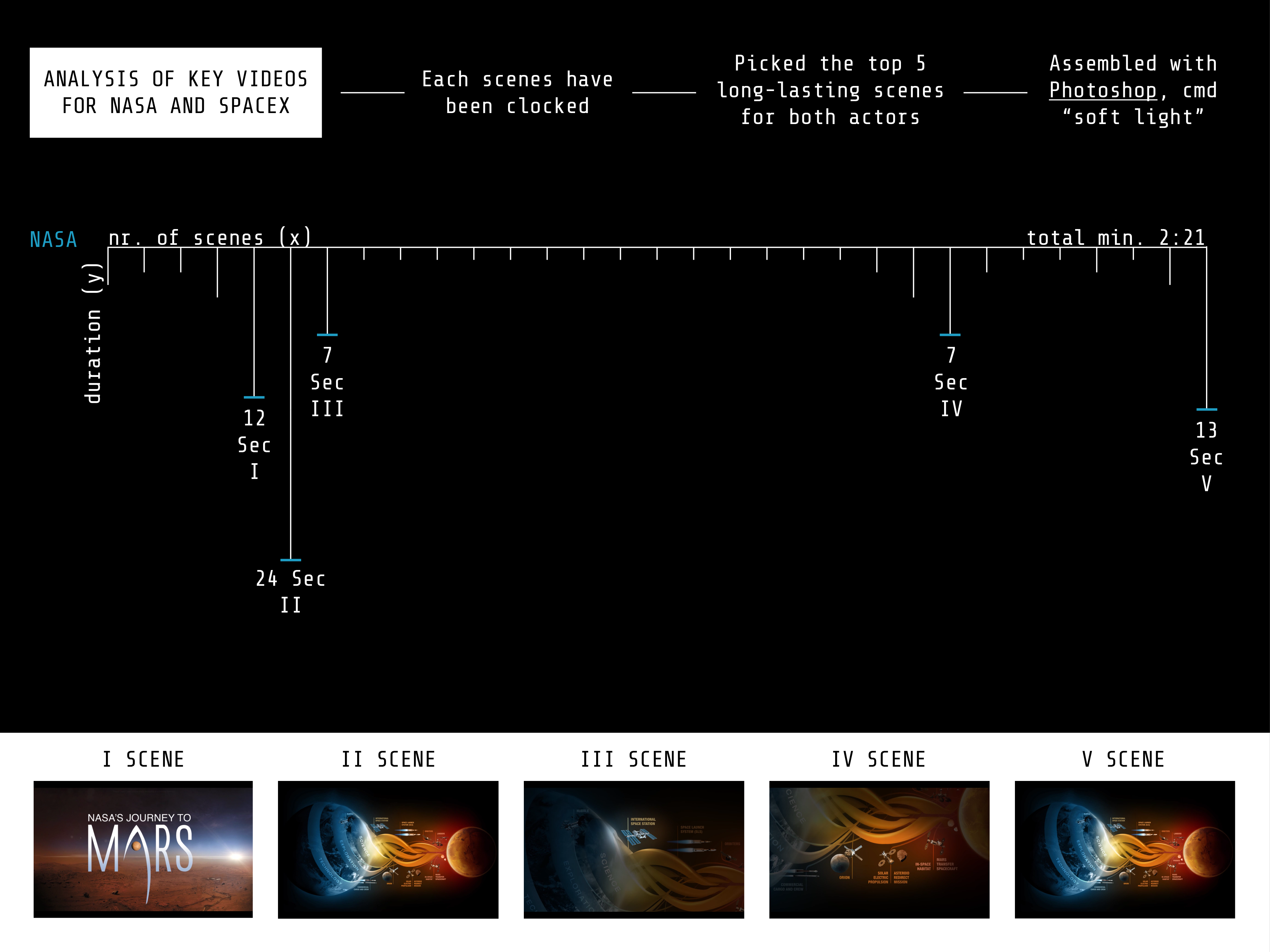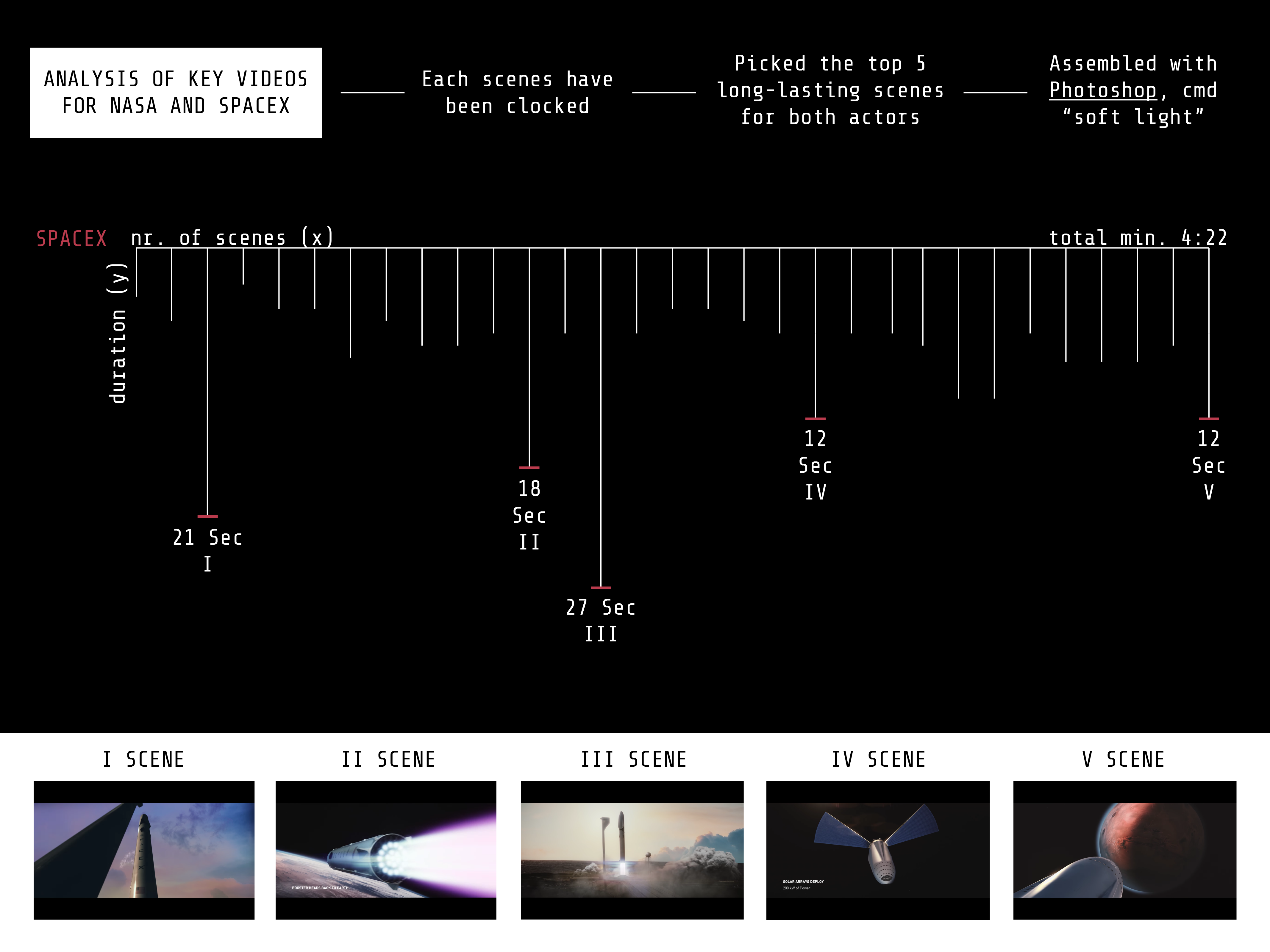Description
This two elaborated images help us to point out the differences that NASA and SpaceX want to deliver. We picked up the key video that described the proposition about the migration to Mars. Both of them have been conceptualized like a TV spot. We have found many different points. When we look at NASA’s video, it is like watching a short documentary, in a very little amount of time they show us a lot of scenes describing minutely different processes and technical solutions that they have realized. In fact, even if this video last half of the time of the other one, it’s more rapid and the number of scenes is exactly the same. Focus frames are pointed on showing the exact amount of steps that are needed to arrive on Mars thanks to the several technologies that NASA has developed (and will develop).
Taking instead the video of SpaceX, we can immediately notice the two black strips at the top and bottom of the screen. This represents the clear will to turn the “migration to Mars” spectacular. As a private agency, SpaceX, among their objectives, tries to sell a different point of view. The video is more engaging; no voiceover tries to teach us anything. Scenes are almost every time longer than the other video thanks to the double of time. Focus frames point to show modern technologies in a celestial atmosphere, helped with soft and ambient music.





